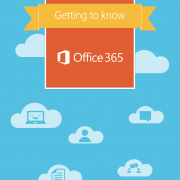Teams Calling has extensive calling plans, and a massive feature list, replacing a complicated Enterprise telephony system is not only possible, but rather simple. Call from within Teams on your laptop, tablet or smartphone or from a wide range of Teams compatible desk phones, handsets, headsets and conference speakerphones.
What exactly is Teams calling? For many from Generation-X merely understanding Teams, or Zoom or Slack and the multitude of other collaboration, chat, meeting and productivity Apps is challenge enough. Many of us have embraced mobiles at least and yet still see the desk phone, well as exactly that, a phone on a desk. 2020 has taught us without doubt the importance of flexible working and a very strong case for Unified Communications.
Why use Collaboration Tools?
There are many, many real-world examples of how organisations with multiple generations of workers respond to persistent chat and social networks in the enterprise. Merely getting through on the phone to businesses during the initial lock-down in 2020 was difficult at best.
Independent research has shown that Millennials in the workplace demonstrate a preference for collaborating in team workspaces with instant messaging, with humorous emojis, while the Gen-X (and Boomers) want Outlook and a phone.
Why would a smart businesses want to complicate their IT spend along non-operational challenges, such as the generation users belong? If they have already invested in Office 365 they’re leveraging Microsoft Teams Calling to provide a multi-generational collaboration solution.
What is Teams ‘killer’ feature?
One of the many brilliant features of Microsoft Teams is in its ability to replace your entire phone system with a managed cloud service. This feature enables PBX (Private Branch Exchange) telephony capabilities right inside Teams. IP Telephony is nothing new, however, this feature enables employees to be so much more productive for such a relatively small effort that we’re surprised more businesses don’t use it.
Why do I need Teams Calling?
If you already have Office 365, and are using Teams, then you recognise that anyone using Microsoft Teams can make a call to other Microsoft Teams users. They can use Windows, Mac, iPhone, iPad, and Android. These calls are peer-to-peer for employees inside a business because Teams does not connect you to the PSTN (Public Switched Telephone Network). Many still connect to the PSTN using PBX hardware installed at an office location. Lots use a form of IP Telephony or Voice over IP (VoIP). Without access to the PSTN, Teams cannot be assigned a phone number, and no one can call you outside your organisation.
Office 365 telephony capabilities provides you with a 100% cloud-based PBX IP Telephony system. All with a simple monthly subscription service in the cloud. You can use Microsoft Teams Calling exactly the same way you use your desk phone. You can even have a desk phone if you prefer that to using the Teams App to make phone calls and receive phone calls. It also means you can take calls from any device running Teams and from anywhere in the world with access to the Internet.
How to set up Telephony in Microsoft Teams?
First of all you need to anable a simple add-on, called Phone Plan. At the time of writing the add-on is £5.70 per month per user including the 5% discount we apply. Microsoft Teams Calling is available for any Microsoft Office 365 plan. Once you have the add-on there are two options to enable users to make, receive, and transfer calls to and from landlines and mobile phones In Teams:
Add Office 365 Calling Plans
With this option, Microsoft provides the phone number and call minutes bundles. This is perfect for self-serve micro and small business users as it’s a simple and the least complicated option that is 100% in the cloud. However, call bundles are less competitive than the next option.
Use Teams Direct Routing
This is an option that is preferred by many organisations, as it means existing IP Telephony can used. If there is no exiting IP Telephony, or it is replaced, Teams Direct Routing is an excellent choice as providers have many features, such as call recording, which are not available from Microsoft. Call costs are significantly lower too with unlimited calling bundles to national and mobile for as little as £9 per user per month.
Get everyone ready
In order to get the right option we recommend you first understand how you will get the best experience out of Teams Calling. Don’t underestimate the importance of network quality because when a call from Teams finally reaches your intended recipient, one low-quality link in that network chain can cause quality issues.
When you take the step, and deploy Teams Calling, it is possible all users will embrace Teams and use more of its functions. Who knows, perhaps the Millennials will start making calls using Microsoft Teams?











Leave a Reply
Want to join the discussion?Feel free to contribute!